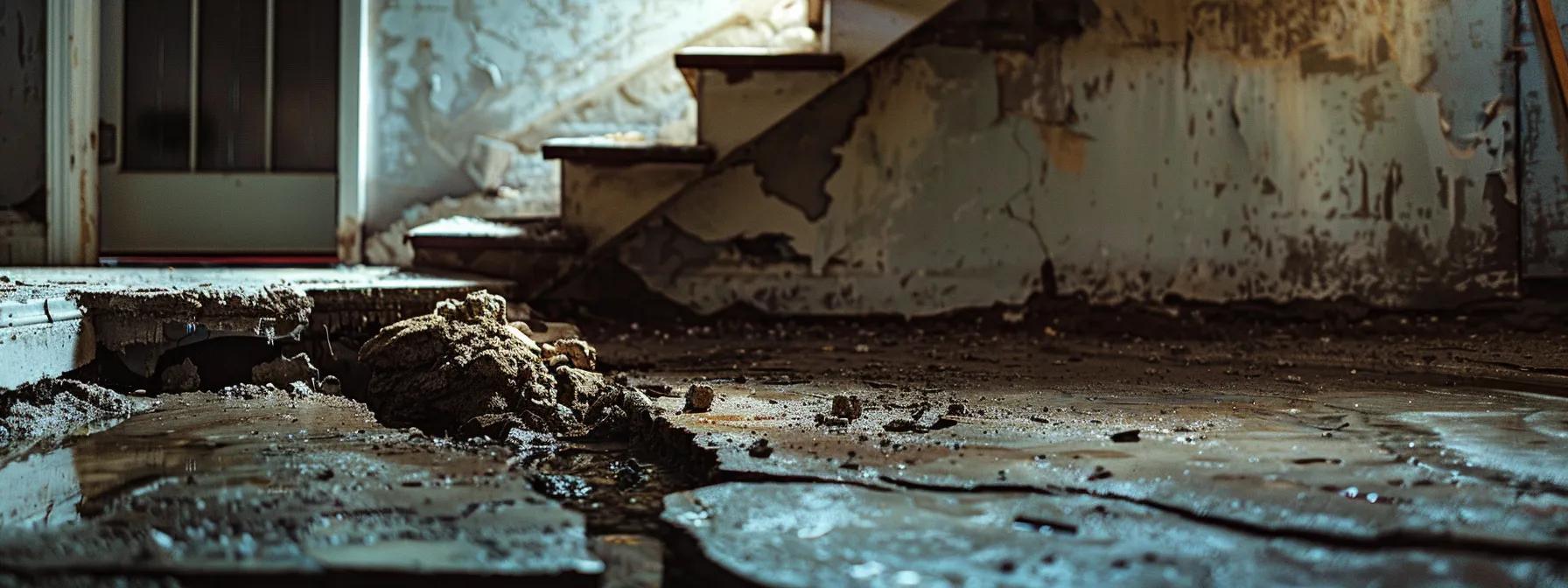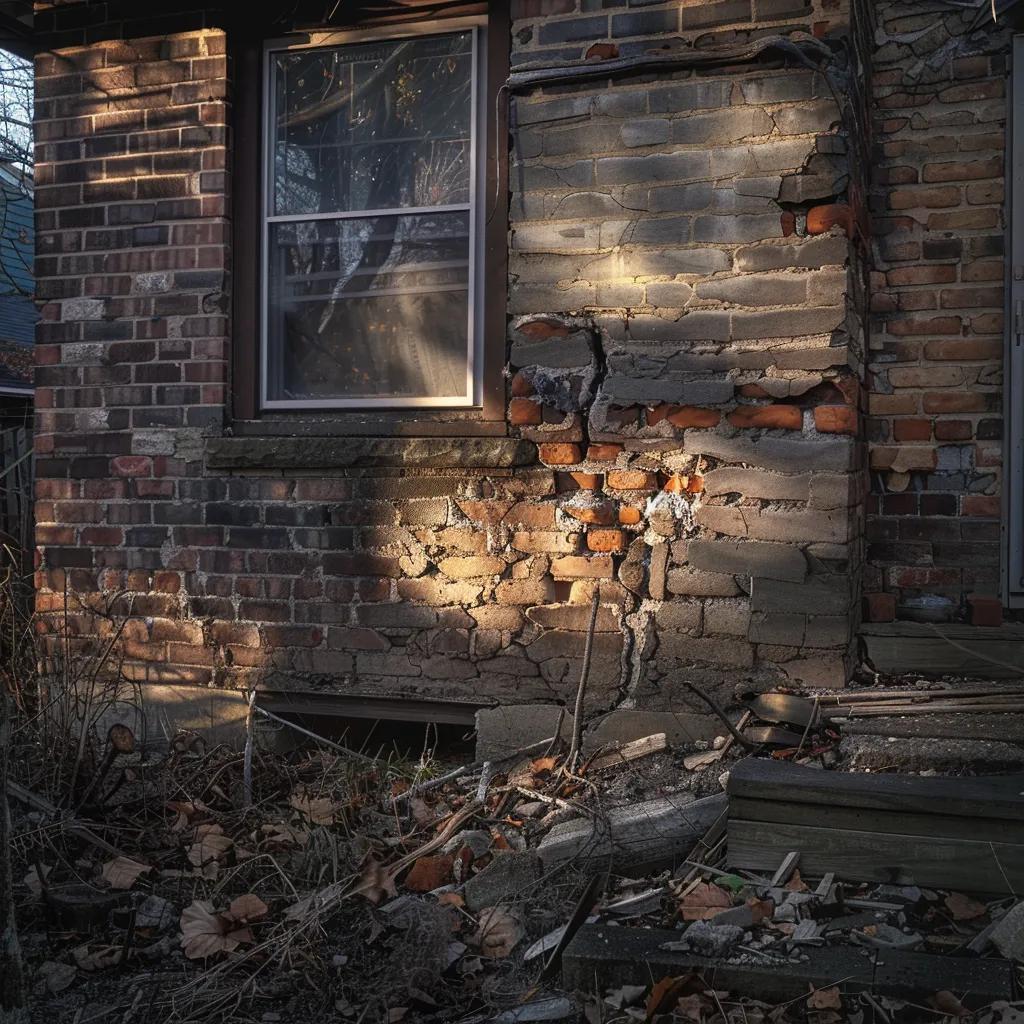What Are the Red Flags of Foundation Issues?
Foundation problems can lead to costly repairs and severe structural damage if not addressed promptly. Homeowners noticing inexplicable wall cracks, uneven floors, misaligned windows, or unusual exterior changes should be aware that these signs may indicate underlying foundation movement and stress. This article details key red flags—from visible wall cracks to subtle interior changes—that help determine when to request a free inspection from foundation experts. The following sections discuss cracks, shifting doors and windows, uneven flooring, exterior damage, basement and crawl space issues, and subtle interior indicators, all of which are critical for deciding if professional repairfoundation services are needed.
Transitioning from these introductory insights, the following sections explain each category of foundation warning signs with practical examples and indicators to guide prompt intervention.
Visible Cracks Signal Potential Foundation Trouble
Visible wall and floor cracks are often the first indicators of foundation instability. Homeowners may notice cracks of varying sizes and orientations. Irregular or extensive cracks, especially those starting at window frames or corners, may signal that the building is shifting and experiencing stress.
Identifying Concerning Wall Cracks Indicating Repair Needs
Wide, jagged, or suddenly appearing wall cracks require close monitoring. Any crack exceeding 1/4 inch in width can indicate serious foundation damage. Progressive widening of these cracks is closely related to settlement issues in the concretefoundation. Homeowners should document crack sizes and consult foundation experts before damage worsens and expensive repairs become necessary.
Floor Cracks That Suggest Foundation Movement
Cracks at the junction of subfloors and adjacent walls suggest uneven settlement. Such floor cracks often appear random rather than following an architectural line. Although minor cracks might be dismissed as normal settling, repeated occurrences and gradual expansion indicate instability. A free professional inspection can confirm whether repairfoundation services are needed.
Recognizing Stair-Step Cracking in Brickwork as a Sign Your Home Needs Foundation Repair
Stair-step cracking along brick mortar joints is a clear warning sign. This pattern, resulting from differential settlement, shows that one section of the structure has shifted while another remains static. These cracks suggest possible issues with soil compaction or original construction flaws. Their progressive widening signals that the damage may be more than cosmetic and requires prompt professional review.
Chimney Cracks as a Red Flag for Foundation Issues
Cracks in the chimney are not isolated defects; they often reflect compromise of the foundation that supports the chimney. As the structure shifts, the chimney may crack, gap, or lean, setting the stage for water infiltration and rot. Professional assessment is advised when chimney cracks emerge, since they indicate stress on the foundation and could endanger other structural components.
Differentiating Normal Settling Cracks From Serious Foundation Problem Indicators
New homes often display minor, hairline cracks from natural settling that remain stable over time. In contrast, large or widening cracks in various areas of the home suggest serious foundation issues. Homeowners should mark crack boundaries and monitor any changes. Significant discrepancies in crack progression require professional inspection and may signal the need for repairfoundation investments.
Shifting Doors and Windows Indicate Your Home Needs Foundation Repair
When foundation issues occur, the entire structure can shift, distorting the alignment of doors and windows. A sticking door or misaligned window is often the first sign that the home’s structural integrity is compromised because the shifting foundation no longer distributes weight evenly.
Doors That Stick, Drag, or Jam Are Telltale Signs
Doors that stick, drag, or jam unexpectedly indicate foundation movement. As the structure shifts, door frames distort, causing misalignment. Even slight interference beyond normal wear and tear in multiple doorways should prompt an evaluation. A professional foundationinspection can discern if such issues stem from settling rather than minor hinge problems, ensuring early detection that prevents more extensive repairfoundation projects.
Windows Becoming Difficult to Open, Close, or That Appear Misaligned
Misaligned windows that are hard to open or close suggest that the window frames are distorting due to foundation movement. Homeowners may notice gaps around the glass or increased effort required to operate the windows. These issues not only reduce energy efficiency but may also allow moisture intrusion. Since the root cause is often structural settlement rather than window component failure, professional assessment is essential for proper repairfoundation evaluation.
Gaps Appearing Around Window or Door Frames Signal Foundation Movement
Small gaps developing between frames and walls indicate that the building’s geometry is changing. Even separations of a few millimeters may lead to secondary problems such as water intrusion or pest entry. Regular documentation of these gaps can provide evidence during a professional inspection, ensuring that minor issues do not evolve into costly repairs.
Recognizing When Misaligned Doors and Windows Point to Urgent Foundation Repair Needs
When several doors stick and multiple windows show irregular gaps, the cumulative evidence points to significant foundation movement. In these cases, detailed structural analyses using advanced tools are vital. Professional foundation experts can recommend corrective measures such as underpinning, slab jacking, or complete reinforcement of affected components. Acting quickly on these signs is critical to mitigate further damage.
Uneven or Sloping Floors Are Clear Red Flags of Foundation Distress
Uneven or sloping floors are clear indicators that the foundation is experiencing significant distress. As the foundation settles unevenly, floors may develop slopes, dips, or a sinking feeling underfoot, which not only creates an aesthetic issue but also signifies potential structural concerns.
Noticing Slopes, Dips, or a Sinking Feeling in Your Flooring
When floors begin to slope or dip noticeably, it implies that the load-bearing structure is shifting. A once-level floor now exhibiting inclines or localized sinking should be measured with a level tool; a difference greater than 1/8 inch across a room is worrisome. Such variations suggest uneven foundation movement and require prompt expert evaluation to avoid further deterioration.
Bouncing, Sagging, or Warped Floors as Indicators of Foundation Issues
Floors that bounce, sag, or warp signal that underlying supports like subfloors or joists may be compromised. These symptoms, which often result from water infiltration or uneven settlement, are not typical in cases of minor settling. Persistent bouncing or sagging should be evaluated by professionals to prevent widespread interior damage.
Tile Cracks or Gaps in Hardwood Flooring Suggesting Foundation Problems
Gaps between tiles or along hardwood edges indicate that the surface is no longer uniform due to shifting foundations. Over time, these gaps can enlarge, creating tripping hazards and facilitating moisture penetration. Structural studies correlate such floor irregularities with foundationsettling; early consultation with a foundation inspector is recommended to assess if repairfoundation services are needed.
How Uneven Floors Signal Your Home Needs Foundation Repair
The overall appearance of uneven floors—a combination of sloping, sagging, and warping—sends a clear message of a compromised foundation. Regular detection of these irregularities should prompt a comprehensive inspection by professionals who may recommend corrective measures like underpinning or shimming. Early intervention can save homeowners substantial repair costs and prevent further structural degradation.
Exterior Warning Signs Pointing to Foundation Damage
The exterior of a home can reveal significant evidence of foundation damage that may not be immediately obvious from inside. Visible deteriorations such as cracks in the foundation walls, bulges, or crumbling concrete can lead to issues such as water seepage or pest invasions, all of which compromise the building’s integrity.
Foundation Walls Showing Cracks, Bulges, or Crumbling Concrete
Cracks, bulges, or crumbling in foundation walls unmistakably indicate structural stress. These issues may occur due to environmental factors like freeze-thaw cycles or excessive soil pressure resulting from settlement. Deterioration of concrete directly compromises the framework of the home. Homeowners should inspect the perimeter and engage foundation experts who offer free inspections to decide on necessary repairfoundation strategies.
Gaps Between the Foundation and Siding or Brickwork
Gaps that appear between the foundation and the exterior siding or brickwork signal that the foundation is pulling away from the structure. Such separations not only affect aesthetics but also increase the risk of moisture intrusion, wood rot, mildew, or insect infestations. Monitoring these gaps regularly can help homeowners catch early signs of foundationsettling and prompt professional diagnostic procedures.
A Leaning Chimney Is a Serious Red Flag for Foundation Problems
A chimney that appears to lean signals that foundation instability may be affecting its structural base. As the home shifts, the chimney’s independent mass can tilt, exacerbating strain on adjacent walls and accelerating deterioration. Since a leaning chimney may presage more severe underpinning issues, immediate professional inspections are advised to assess and remediate foundation damage before the problem escalates.
Soil Pulling Away From Foundation Walls or Water Pooling Near the Foundation
Visible changes in the soil around the home—such as soil pulling away from foundation walls or water pooling near the base—indicate that the foundation may no longer be adequately supported. These symptoms can result from erosion, shifting soil, or improper drainage systems. Regular checks of property grading, downspouts, and drainage are crucial. Early detection through such observations is key to timely repairfoundation services.
Basement and Crawl Space Clues Reveal Foundation Problems
Basements and crawl spaces offer a direct view of a home’s foundation and may display early signs of trouble. Moisture, water intrusion, or musty odors in these areas are dangerous because they can accelerate concrete deterioration and promote mold and insect infestations.
Detecting Moisture, Water Intrusion, or Musty Smells in Basements or Crawl Spaces
A damp or musty odor in a basement or crawl space is often an early indicator of water intrusion. Visible signs such as water stains, small puddles, or condensation on walls signal that moisture is penetrating the structure, potentially weakening the foundation. Using moisture meters during regular inspections can aid in early detection, and addressing these problems through improved crawl space waterproofing is imperative to prevent further damage.
Bowed or Cracked Basement Walls as Foundation Red Flags
Bowed or cracked basement walls indicate that lateral soil pressure is exceeding the wall’s capacity. When walls curve inward or display multiple cracks, it is a sign that the foundation is under significant stress. Immediate evaluation by professional foundation repair services is recommended as these distortions can lead to cascading issues like sloping floors and misaligned fixtures.
Calcium Stains or Efflorescence on Basement Walls Indicating Moisture Penetration
The appearance of calcium stains or efflorescence on basement walls signals prolonged moisture penetration. As water travels through porous materials carrying dissolved salts, these crystallize on the surface. Such signs suggest that waterproofing measures are failing, and prompt remediation is required to preserve the foundation’s structural health.
Visible Cracks in the Concrete Slab or Piers Within the Crawl Space
Cracks in the concrete slab or supporting piers are significant indicators of settlement and foundation distress. Even small cracks that progressively widen confirm that the uniform support of the structure is compromised. Homeowners should use crack measurement tools to monitor any changes and engage a professional foundation repair team to determine the necessary remediation measures.
Hidden Interior Signs Your Home Needs Foundation RepairSigns Your Home Needs Foundation Repair
Not all foundation issues are obvious from outside; subtle interior changes can also indicate underlying structural problems. Cosmetic anomalies such as misaligned fixtures may in fact reflect significant foundation movement.
Counters or Cabinets Separating From Walls
When kitchen cabinets or countertops begin to separate from walls, it may be due to differential settling. Such misalignments, along with visible gaps, not only affect the room’s aesthetics but may also impact functionality. This subtle indicator warrants a free foundation inspection to prevent further internal damage.
Nails Popping Out of Drywall
Nails that unexpectedly pop out of the drywall can signal that the wall’s structure is under stress from foundation movement. Repeated nail pops across multiple areas suggest that the issue is systemic rather than isolated, and a professional evaluation is recommended to determine whether repairfoundation services are needed.
Gaps Forming Between Walls and Ceilings or Floors
Small gaps where walls meet ceilings or floors may appear to be normal wear but can indicate uneven settling when they begin widening over time. Such gaps lead to increased energy loss and uneven structural support, so timely professional evaluation is important to realign the structure properly.
Unexplained Plumbing Issues Potentially Linked to Foundation Shifts
Plumbing problems such as leaks, low water pressure, or misaligned pipes may result from foundation shifts distorting the embedded plumbing lines. These recurring issues, despite standard repairs, point to possible internal structural movement. Coordinating evaluations from both plumbing professionals and foundation experts is important to address the underlying cause.
Final Thoughts
The warning signs of foundation issues are varied—from visible cracks and uneven floors to subtle interior misalignments and shifting doors. Each indicator, whether due to wall deterioration or soil movement, provides vital clues about the overall health of the home’s foundation. Homeowners should diligently monitor these red flags and engage professional foundation experts for timely intervention, which is key to preserving structural integrity and long-term safety.
Frequently Asked Questions
Q: How can a homeowner differentiate between normal settlingcracks and foundation-related cracks? A: Normal settling cracks are typically thin, hairline, and remain stable over time, whereas foundation-related cracks are wider than 1/4 inch, jagged, and tend to enlarge or appear suddenly. Regular observation and documentation, along with professional assessment, are essential.
Q: What are the first signsthat shifting doors or windows might indicate foundation issues? A: The initial signs include doors that stick, drag, or become misaligned, and windows that are difficult to operate. Such issues usually result from foundation shifts and should prompt a professional inspection.
Q: Why do uneven floorsoften indicate foundationdistress? A: Uneven floors result from an unevenly settling foundation, leading to slopes, dips, or warping. These symptoms suggest that the underlying support system is compromised, requiring timely evaluation by a foundation repair expert.
Q: How can exterior cues, such as gaps between the foundationand siding, signal foundation damage? A: Gaps between the foundation and siding form as the structure shifts. These separations, along with additional signs like leaning chimneys or crumbling concrete, are red flags for potential foundation problems.
Q: What interior changes should prompt a homeowner to seek professional advice for foundation issues? A: Signs include counters or cabinets separating from walls, nails popping out of drywall, and gaps forming between walls and ceilings. These subtle changes indicate structural movement due to a shifting foundation.
Q: Can minor cracks or shifting fixtures sometimes be a normal part of a home’s life cycle? A: While some minor and stable cracks may be part of the natural settling process, significant changes in crack size, recurring nail pops, or sudden misalignment of fixtures typically indicate more serious foundation issues, warranting a professional inspection.
Q: How soon should foundation repairbe addressed once symptoms appear? A: Any significant symptom should be addressed immediately. Early interventions such as professional inspections and prompt repair foundation services can prevent further deterioration and reduce future repair costs.
The table above summarizes key warning signs of foundation damage, the associated indicators, potential issues, and the recommended actions for homeowners. Regular monitoring combined with early professional intervention is essential to preserve the integrity of a house foundation.


